The Insecticide Seed Treatment Market is expected to register a CAGR of 11% from 2025 to 2031, with a market size expanding from US$ XX Million in 2024 to US$ XX Million by 2031.
The insecticide seed treatment market report is segmented by type (chemical and biological). The market is segmented based on application technique (dressing, coating, and pelleting). The market is segmented based on form (liquid and dry). The market is segmented based on crop type (cereals and oilseeds, fruits and vegetables, and others). The market size and forecast at global, regional, and country levels for all the key market segments are covered under the scope. The report offers the value in USD for the above analysis, segments, regions, and countries. The report covers market trends, as well as market dynamics such as drivers, restraints, and key opportunities. The report also covers industry landscape and competition analysis covering market concentration, heat map analysis, prominent players, and recent developments in the market.
Purpose of the ReportThe report Insecticide Seed Treatment Market by The Insight Partners aims to describe the present landscape and future growth, top driving factors, challenges, and opportunities. This will provide insights to various business stakeholders, such as:
- Technology Providers/Manufacturers: To understand the evolving market dynamics and know the potential growth opportunities, enabling them to make informed strategic decisions.
- Investors: To conduct a comprehensive trend analysis regarding the market growth rate, market financial projections, and opportunities that exist across the value chain.
- Regulatory bodies: To regulate policies and police activities in the market with the aim of minimizing abuse, preserving investor trust and confidence, and upholding the integrity and stability of the market.
Insecticide Seed Treatment Market Segmentation
Type- Chemical and Biological
- Dressing
- Coating
- Pelleting
- Liquid and Dry
- Cereals and Oilseeds
- Fruits and Vegetables
Strategic Insights
Insecticide Seed Treatment Market Growth Drivers- Rising Demand for High Agricultural Productivity: One of the primary drivers for the insecticide seed treatment market is the increasing need for higher agricultural yields. With the global population growing rapidly and the demand for food products increasing, farmers are adopting advanced agricultural practices to ensure better crop yields. Insecticide seed treatments help in protecting crops from early-stage insect infestations, leading to healthier plants and higher productivity. By preventing damage to seeds and seedlings from pests, this treatment boosts crop performance and helps achieve the required food production targets.
- Growing Adoption of Sustainable Agricultural Practices: The agricultural industry is increasingly shifting towards sustainable practices to reduce environmental impact and increase long-term viability. Insecticide seed treatments offer several environmental benefits, such as reducing the need for multiple pesticide applications during the growing season. By treating the seed itself, these insecticides are more targeted and efficient, reducing chemical runoff and minimizing exposure to non-target species. With rising awareness about sustainable farming and organic certification, insecticide seed treatments are seen as an eco-friendly and effective option to manage pests while reducing environmental harm.
- Resistance Management and Crop Protection: The growing resistance of insects to traditional chemical pesticides is a significant concern for farmers. Insecticide seed treatments help address this issue by providing an early-stage pest control solution, reducing the need for repeated pesticide applications throughout the growing season. This not only manages resistance more effectively but also lowers the risks of pest resurgence. As pest resistance continues to evolve, seed treatment solutions offer a proactive and integrated pest management strategy that contributes to more resilient farming systems.
- Technological Advancements in Seed Treatment Solutions: The insecticide seed treatment market is witnessing significant advancements in the development of more effective and safer insecticide formulations. Biotechnology and nanotechnology are playing a pivotal role in creating novel insecticide treatments with enhanced precision and efficiency. For instance, encapsulation technologies can help deliver insecticides in a controlled manner, reducing their environmental impact while maximizing efficacy. As these innovations continue, they will offer more tailored solutions for specific crops and pest species, enhancing the overall effectiveness of seed treatment.
- Integration of Biological and Chemical Insecticides: There is a growing trend toward integrating biological insecticides with chemical seed treatments to achieve a more balanced and sustainable approach to pest control. Biological agents, such as beneficial microorganisms or plant-derived compounds, are gaining popularity for their ability to complement chemical insecticides and reduce the environmental footprint. Combining these two approaches provides effective pest control while minimizing chemical use, making it an attractive option for farmers focused on sustainability and long-term crop health.
- Focus on Customized and Precision Agriculture: The rise of precision agriculture is reshaping the way farmers approach crop management, including pest control. As data-driven farming becomes more prevalent, customized seed treatments based on specific pest threats, soil conditions, and climate variables are gaining traction. By using technologies like IoT, satellite imagery, and advanced sensors, seed treatments can be tailored to individual farm needs, optimizing both efficacy and cost. This trend toward precision will continue to drive the growth of insecticide seed treatments that are customized for specific crops and environmental conditions.
- Expansion in Emerging Markets: The growing adoption of modern agricultural practices in emerging markets presents a significant opportunity for the insecticide seed treatment market. Countries in Asia-Pacific, Latin America, and Africa are increasingly focusing on improving agricultural productivity to feed their expanding populations. As these regions experience higher income levels and growing awareness of the benefits of seed treatments, demand for insecticide-treated seeds is expected to rise. This offers a lucrative opportunity for market players to expand their footprint in these developing regions with customized solutions for local farming practices.
- Increase in Specialty Crop Markets: As farmers diversify into specialty crops, such as fruits, vegetables, and pulses, the demand for specific pest control solutions for these crops is growing. Insecticide seed treatments offer targeted protection for these crops during the critical germination and early growth stages, helping ensure healthy plant development. The growing market for high-value crops presents an opportunity for insecticide seed treatment companies to develop tailored solutions that address the unique pest challenges of specialty crops, driving demand in these niche markets.
- Strategic Partnerships and Mergers: As the insecticide seed treatment market continues to grow, strategic partnerships, collaborations, and mergers between companies in the agricultural and agrochemical sectors offer opportunities for market expansion. By partnering with seed producers, agritech firms, and research organizations, companies can access new technologies, expand product offerings, and enter new geographic markets. These partnerships allow companies to develop comprehensive, integrated pest management solutions that incorporate insecticide seed treatments, offering more holistic benefits to farmers.
Market Report Scope
Key Selling Points
- Comprehensive Coverage: The report comprehensively covers the analysis of products, services, types, and end users of the Insecticide Seed Treatment Market, providing a holistic landscape.
- Expert Analysis: The report is compiled based on the in-depth understanding of industry experts and analysts.
- Up-to-date Information: The report assures business relevance due to its coverage of recent information and data trends.
- Customization Options: This report can be customized to cater to specific client requirements and suit the business strategies aptly.
The research report on the Insecticide Seed Treatment Market can, therefore, help spearhead the trail of decoding and understanding the industry scenario and growth prospects. Although there can be a few valid concerns, the overall benefits of this report tend to outweigh the disadvantages.
REGIONAL FRAMEWORK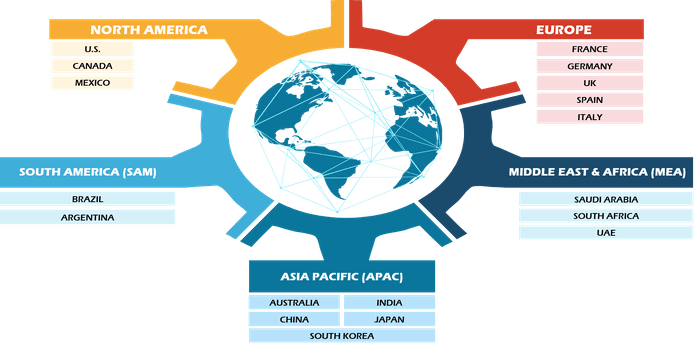
Have a question?

Shejal
Shejal will walk you through a 15-minute call to present the report’s content and answer all queries if you have any.
 Speak to Analyst
Speak to Analyst
- Sample PDF showcases the content structure and the nature of the information with qualitative and quantitative analysis.
- Request discounts available for Start-Ups & Universities
- Sample PDF showcases the content structure and the nature of the information with qualitative and quantitative analysis.
- Request discounts available for Start-Ups & Universities

Report Coverage
Revenue forecast, Company Analysis, Industry landscape, Growth factors, and Trends

Segment Covered
This text is related
to segments covered.
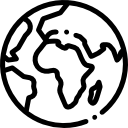
Regional Scope
North America, Europe, Asia Pacific, Middle East & Africa, South & Central America

Country Scope
This text is related
to country scope.
Frequently Asked Questions
The insecticide seed treatment market is estimated to witness a CAGR of 11% from 2025 to 2031
Rising demand for high agricultural productivity are driving the market growth.
BASF SE, Syngenta, Bayer, Monsanto, FMC Corporation, Nufarm Limited, Novozymes A/S, Platform Specialty Products, Sumitomo Chemical Company Ltd, and Yara are the key players operating in the insecticide seed treatment market.
Based on type, the biological segment is expected to witness the fastest growth during the forecast period.
Based on geography, Asia Pacific held the largest share of the insecticide seed treatment market due to the strong growth of the agriculture sector in the region.
Technological advancements in seed treatment solutions are expected to be the key market trends.
Yes! We provide a free sample of the report, which includes Report Scope (Table of Contents), report structure, and selected insights to help you assess the value of the full report. Please click on the "Download Sample" button or contact us to receive your copy.
Absolutely - analyst assistance is part of the package. You can connect with our analyst post-purchase to clarify report insights, methodology or discuss how the findings apply to your business needs.
Once your order is successfully placed, you will receive a confirmation email along with your invoice.
• For published reports: You'll receive access to the report within 4-6 working hours via a secured email sent to your email.
• For upcoming reports: Your order will be recorded as a pre-booking. Our team will share the estimated release date and keep you informed of any updates. As soon as the report is published, it will be delivered to your registered email.
We offer customization options to align the report with your specific objectives. Whether you need deeper insights into a particular region, industry segment, competitor analysis, or data cut, our research team can tailor the report accordingly. Please share your requirements with us, and we'll be happy to provide a customized proposal or scope.
The report is available in either PDF format or as an Excel dataset, depending on the license you choose.
The PDF version provides the full analysis and visuals in a ready-to-read format. The Excel dataset includes all underlying data tables for easy manipulation and further analysis.
Please review the license options at checkout or contact us to confirm which formats are included with your purchase.
Our payment process is fully secure and PCI-DSS compliant.
We use trusted and encrypted payment gateways to ensure that all transactions are protected with industry-standard SSL encryption. Your payment details are never stored on our servers and are handled securely by certified third-party processors.
You can make your purchase with confidence, knowing your personal and financial information is safe with us.
Yes, we do offer special pricing for bulk purchases.
If you're interested in purchasing multiple reports, we're happy to provide a customized bundle offer or volume-based discount tailored to your needs. Please contact our sales team with the list of reports you're considering, and we'll share a personalized quote.
Yes, absolutely.
Our team is available to help you make an informed decision. Whether you have questions about the report's scope, methodology, customization options, or which license suits you best, we're here to assist. Please reach out to us at sales@theinsightpartners.com, and one of our representatives will get in touch promptly.
Yes, a billing invoice will be automatically generated and sent to your registered email upon successful completion of your purchase.
If you need the invoice in a specific format or require additional details (such as company name, GST, or VAT information), feel free to contact us, and we'll be happy to assist.
Yes, certainly.
If you encounter any difficulties accessing or receiving your report, our support team is ready to assist you. Simply reach out to us via email or live chat with your order information, and we'll ensure the issue is resolved quickly so you can access your report without interruption.
The Insight Partners performs research in 4 major stages: Data Collection & Secondary Research, Primary Research, Data Analysis and Data Triangulation & Final Review.
- Data Collection and Secondary Research:
As a market research and consulting firm operating from a decade, we have published many reports and advised several clients across the globe. First step for any study will start with an assessment of currently available data and insights from existing reports. Further, historical and current market information is collected from Investor Presentations, Annual Reports, SEC Filings, etc., and other information related to company’s performance and market positioning are gathered from Paid Databases (Factiva, Hoovers, and Reuters) and various other publications available in public domain.
Several associations trade associates, technical forums, institutes, societies and organizations are accessed to gain technical as well as market related insights through their publications such as research papers, blogs and press releases related to the studies are referred to get cues about the market. Further, white papers, journals, magazines, and other news articles published in the last 3 years are scrutinized and analyzed to understand the current market trends.
- Primary Research:
The primarily interview analysis comprise of data obtained from industry participants interview and answers to survey questions gathered by in-house primary team.
For primary research, interviews are conducted with industry experts/CEOs/Marketing Managers/Sales Managers/VPs/Subject Matter Experts from both demand and supply side to get a 360-degree view of the market. The primary team conducts several interviews based on the complexity of the markets to understand the various market trends and dynamics which makes research more credible and precise.
A typical research interview fulfils the following functions:
- Provides first-hand information on the market size, market trends, growth trends, competitive landscape, and outlook
- Validates and strengthens in-house secondary research findings
- Develops the analysis team’s expertise and market understanding
Primary research involves email interactions and telephone interviews for each market, category, segment, and sub-segment across geographies. The participants who typically take part in such a process include, but are not limited to:
- Industry participants: VPs, business development managers, market intelligence managers and national sales managers
- Outside experts: Valuation experts, research analysts and key opinion leaders specializing in the electronics and semiconductor industry.
Below is the breakup of our primary respondents by company, designation, and region:

Once we receive the confirmation from primary research sources or primary respondents, we finalize the base year market estimation and forecast the data as per the macroeconomic and microeconomic factors assessed during data collection.
- Data Analysis:
Once data is validated through both secondary as well as primary respondents, we finalize the market estimations by hypothesis formulation and factor analysis at regional and country level.
- 3.1 Macro-Economic Factor Analysis:
We analyse macroeconomic indicators such the gross domestic product (GDP), increase in the demand for goods and services across industries, technological advancement, regional economic growth, governmental policies, the influence of COVID-19, PEST analysis, and other aspects. This analysis aids in setting benchmarks for various nations/regions and approximating market splits. Additionally, the general trend of the aforementioned components aid in determining the market's development possibilities.
- 3.2 Country Level Data:
Various factors that are especially aligned to the country are taken into account to determine the market size for a certain area and country, including the presence of vendors, such as headquarters and offices, the country's GDP, demand patterns, and industry growth. To comprehend the market dynamics for the nation, a number of growth variables, inhibitors, application areas, and current market trends are researched. The aforementioned elements aid in determining the country's overall market's growth potential.
- 3.3 Company Profile:
The “Table of Contents” is formulated by listing and analyzing more than 25 - 30 companies operating in the market ecosystem across geographies. However, we profile only 10 companies as a standard practice in our syndicate reports. These 10 companies comprise leading, emerging, and regional players. Nonetheless, our analysis is not restricted to the 10 listed companies, we also analyze other companies present in the market to develop a holistic view and understand the prevailing trends. The “Company Profiles” section in the report covers key facts, business description, products & services, financial information, SWOT analysis, and key developments. The financial information presented is extracted from the annual reports and official documents of the publicly listed companies. Upon collecting the information for the sections of respective companies, we verify them via various primary sources and then compile the data in respective company profiles. The company level information helps us in deriving the base number as well as in forecasting the market size.
- 3.4 Developing Base Number:
Aggregation of sales statistics (2020-2022) and macro-economic factor, and other secondary and primary research insights are utilized to arrive at base number and related market shares for 2022. The data gaps are identified in this step and relevant market data is analyzed, collected from paid primary interviews or databases. On finalizing the base year market size, forecasts are developed on the basis of macro-economic, industry and market growth factors and company level analysis.
- Data Triangulation and Final Review:
The market findings and base year market size calculations are validated from supply as well as demand side. Demand side validations are based on macro-economic factor analysis and benchmarks for respective regions and countries. In case of supply side validations, revenues of major companies are estimated (in case not available) based on industry benchmark, approximate number of employees, product portfolio, and primary interviews revenues are gathered. Further revenue from target product/service segment is assessed to avoid overshooting of market statistics. In case of heavy deviations between supply and demand side values, all thes steps are repeated to achieve synchronization.
We follow an iterative model, wherein we share our research findings with Subject Matter Experts (SME’s) and Key Opinion Leaders (KOLs) until consensus view of the market is not formulated – this model negates any drastic deviation in the opinions of experts. Only validated and universally acceptable research findings are quoted in our reports.
We have important check points that we use to validate our research findings – which we call – data triangulation, where we validate the information, we generate from secondary sources with primary interviews and then we re-validate with our internal data bases and Subject matter experts. This comprehensive model enables us to deliver high quality, reliable data in shortest possible time.


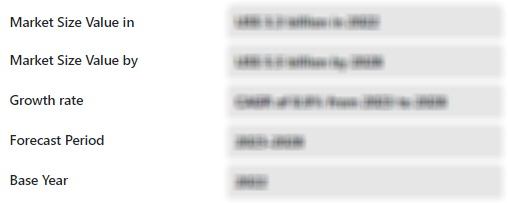
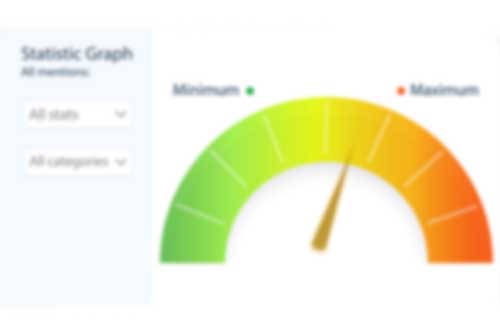
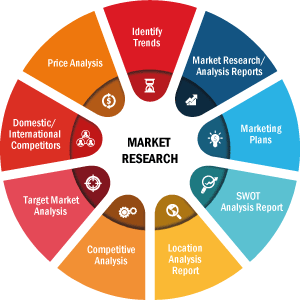
 Get Free Sample For
Get Free Sample For